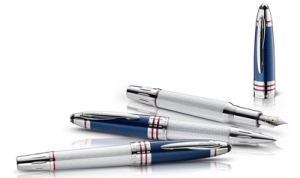NEW YORK – The luxury world may be unrecognizable in 10 years, according to a New York University professor speaking at the FACC Luxury Symposium 2016.
Inklings of the future landscape are already falling into place, and 10 years ago luxury looked very different than it does today, so it follows that another 10 years will transform it to a similar extent. As technology continues to evolve, luxury will be forced to continue adapting to a consumer mindset suited to small, specific, value-driven propositions rather than the mass consumerist markets of recent years.
“Everything’s going to change,” said Lawrence Lenihan, adjunct professor at NYU Stern School of Business and co-founder and co-CEO of Resonance. “This is not specific to just luxury fashion; this is for everything out there.”
FACC Luxury Symposium was organized by French-American Chamber of Commerce.
Here’s to the future
Mr. Lenihan revealed a number of key changes he thinks the luxury business will see in the next 10 years that will differentiate it from the past 10 years.
The first of these is the disappearance of “accessible” or “affordable” luxury, which he dismisses as a positioning gimmick that cannot honestly apply to luxury. Brands will need to be honest about this and realize that if they truly deal in affordable, accessible or mass “luxury,” they are not dealing in luxury.
The value of luxury will instead be defined by quality, scarcity, convenience, price and experience. All brands will need to have a strong value proposition; they will not be able to rely merely on brand loyalty.
One possible result is a large increase in limited-edition products that capitalize on scarcity and the consumer’s desire to have something that others cannot.
Montblanc.jfk limited edition pen
Mr. Lenihan also emphasized that many of the ways in which we traditionally think of business and luxury. Brands will need to realize that business exists to serve creators, not the other way around. By extension, heritage is about the spirit of the brand’s original creator, not the brand’s age.
This means that rather than being about marketing, data, margins, growth and even lawyers and accountants, brands will be driven by talent and vision and promise to deliver experiences, excitement and energy.
Consequently, brands will need to realize that their name is about a connection, not an ad campaign or a face or a property. Products, experiences and a respect for the customer’s intelligence will be key attributes of the future’s most coveted and successful luxury brands.
“Those days are over, you can’t have a celeb in front of the Eiffel Tower and say, ‘Look how wonderful our product is,’” Mr. Lenihan said. “People are smarter.”
Other current trends will also develop to their logical extreme. The current omnichannel craze will be superseded by a unified commerce experience in which the consumer and brand are seamlessly connected rather than communicating across a number of different touchpoints.
Among the most significant and potentially shocking predictions Mr. Lenihan makes is the end of the billion-dollar brand. Technology will allow consumers to find very precise products that they want and allow good marketers to bring those products directly to those consumers.
As a result, brands will need to tighten their focus, as meaning something to more people means that the brand’s proposition is diluted to everybody. That leaves room for new entrants to reach each of those sub-market segments and steal them away from those casting their nets too widely.
This niche-oriented business model will disrupt industries and usher a change from a model based on economies of scale, in which growth is measured in percentage, to an “economies of small” measured in multiples.
In turn, big retailers will have to adapt their business model entirely. A market full of countless small brands with extreme proximity to their consumers rather than one dominated by a handful of large brands will compromise big retail.
For Mr. Lenihan, retailers will need to shift from an income statement business to a balance sheet business and act as service providers rather than gatekeepers.
Lastly, sustainability is here to stay, and in 10 years, there will be no plausible deniability. Technology and a fast-shifting set of values will force transparency and accountability.
With sustainability being so big, both socially and perhaps governmentally, brands will not be able to think of it as a strategy or niche marketing technique. Instead, they must see it as a foundational given for the brand, something that simply is rather than something that is done.
More generally, this will result in other metrics of success involving. With a faster, technology driven world cost of and time to failure will be key, as they measure how quickly and at what cost a brand can experiment with new ideas.
Changing tides
Brands are already moving away from a multichannel approach to more unified interaction with the consumer.
While 85 percent of retailers consider unified commerce a top priority, most are not making enough of an effort in upgrading their infrastructure to achieve a fully seamless shopping experience.
According to a new report from Boston Retail Partners, retailers have attempted to reformat their outdated systems to accommodate cross-channel capabilities, leaving many with “faux omnichannel.” As the consumer comes to expect a uniform service across channels, retailers are at risk of losing clientele if they do not implement a more holistic system (see story).
Some businesses are already opting for transparency regarding their environmental actions.
For example, French luxury conglomerate Kering is helping the world visualize its environmental impact with an interactive environmental profit and loss statement.
Kering’s results page on the conglomerate’s Web site contains a grid depicting the various steps in production and environmental categories in which it could make an impact, with each square containing a circle in relation to the impact that has been made. Kering’s transparency shows its dedication and the steps it has taken while also helping other companies to examine where they can make changes one step at a time (see story).
from Apparel and accessories – Luxury Daily http://www.luxurydaily.com/niche-brands-and-economies-of-small-will-rule-tomorrows-luxury-industry/
via Your #1 Source to Finding Luxury & Designer Goods, Handbags & Clothes at or Below Wholesale: Click Here.


No comments:
Post a Comment